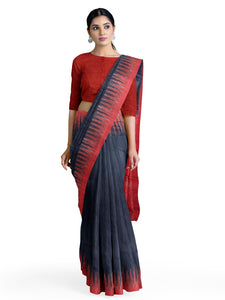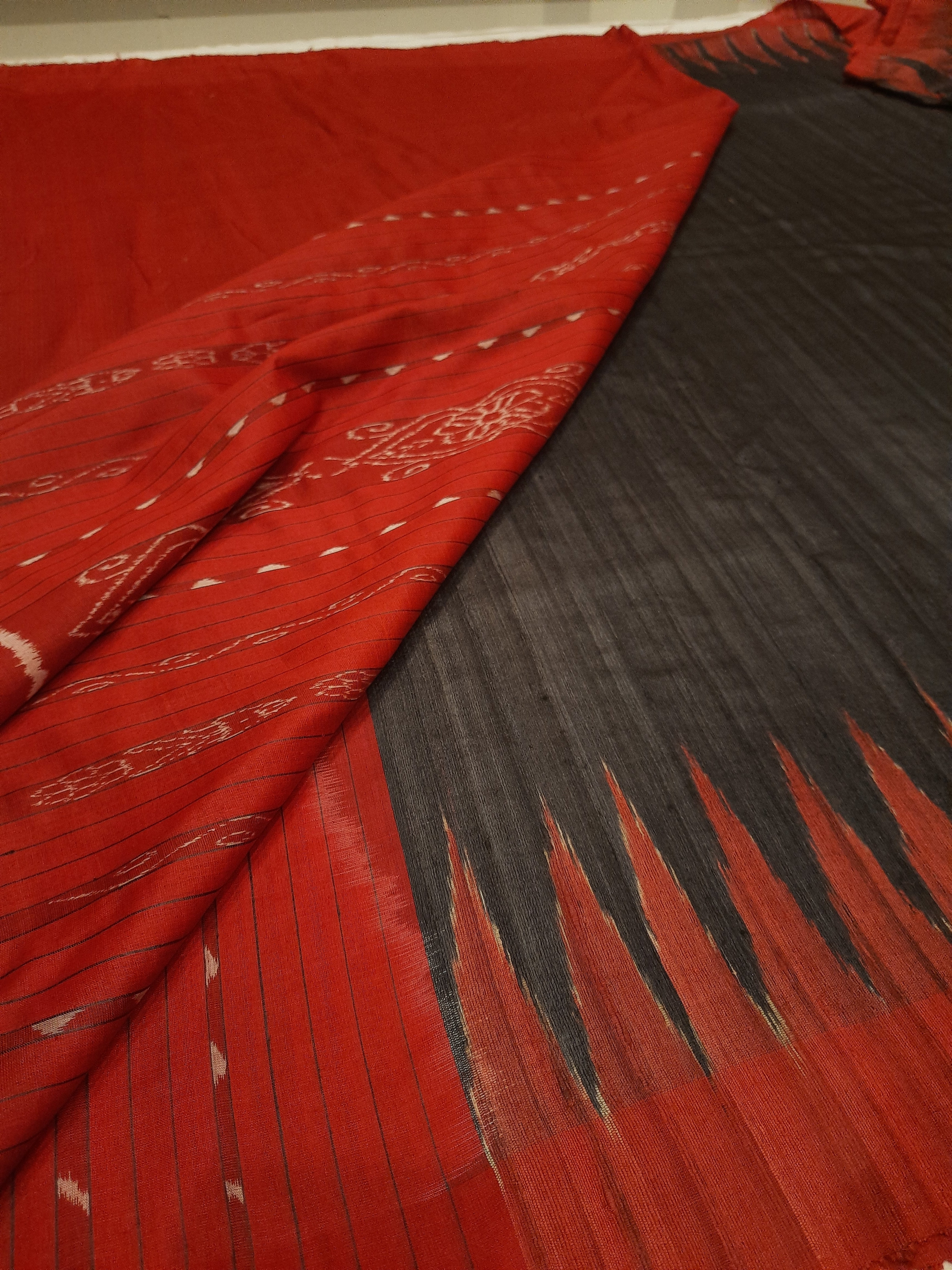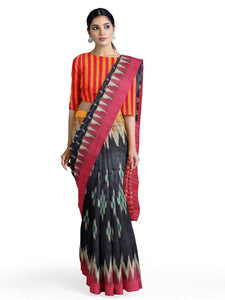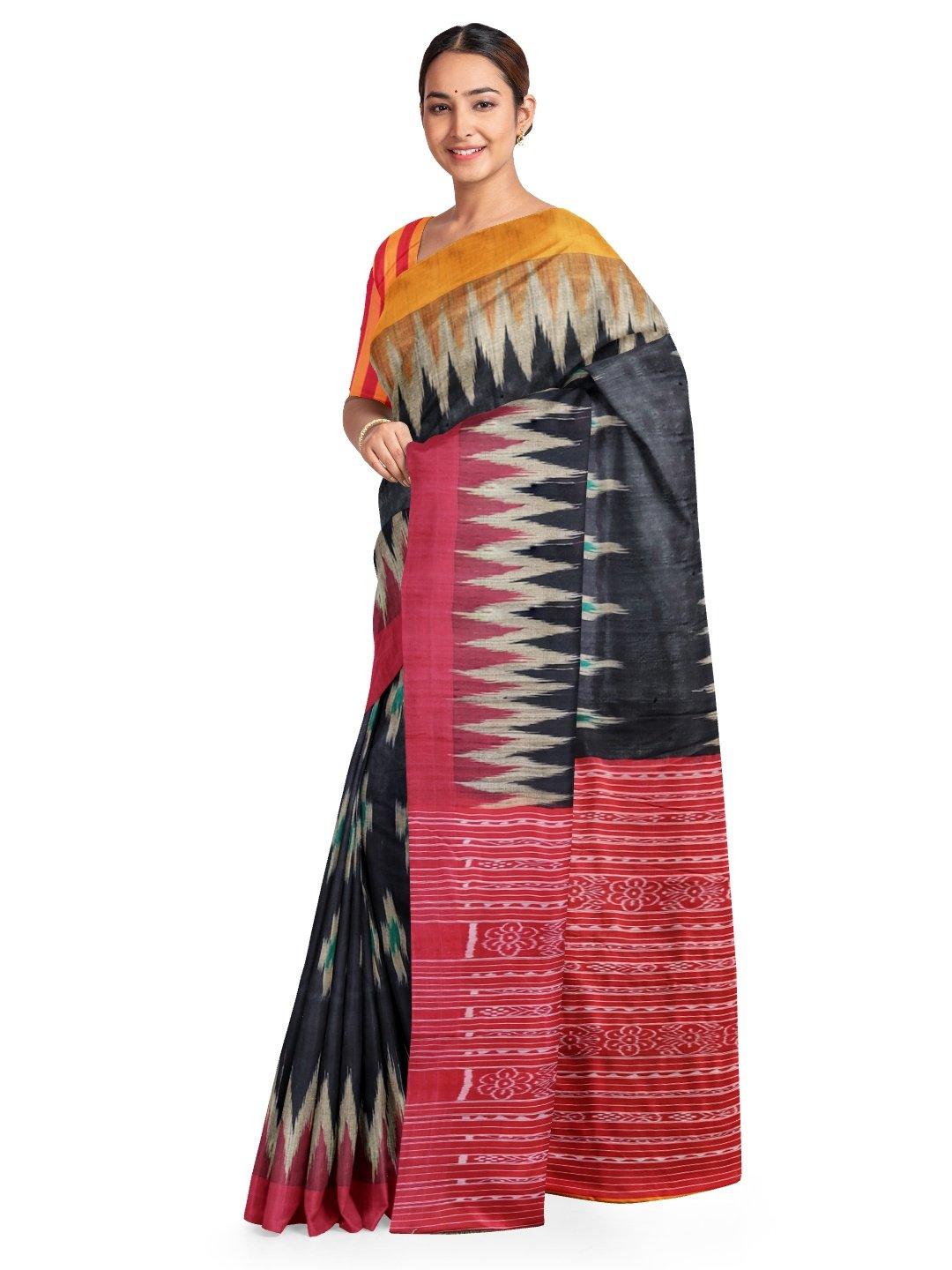Tussar Silk Sarees
History Of Tussar Silk Saree
The term Tussar is traced from the Sanskrit name, tasara, the weaver’s shuttle, as referred to in Vedas.
Tussar Silk Saree is more textured than mulberry silk.
The dull natural texture works as a suitable fabric for painting, embroidery and also hand block motifs.
The fabric is also cooler than the other silk varieties and is a lot more porous for which Tussar Saree is widely accepted in India as well as other warmer parts of the world. This is also known as Kosa Silk.
Tussar Silk Saree Cultivation
Sericulture being the most viable income generating source gives the makers a reason to work hard over the silk and deliver fault-free thread.
The copperish colour gold silk generated by the silkworms of the moth. Tussar cultivation is in three crops. First, two are seed crops and the third one for the commercial crop from which cocoons are collected.
The process of extraction of Tussar Saree threads from the cocoon is called Reeling. The process is marked as collection, processing of cocoon & then spinning of silk yarn.
Famous Place For Tussar Silk Saree
Gopalpur village is famous for producing Tussar fabrics. It is in Jajpur District in the Indian state of Odisha.
Gopalpur is known for its production of different tussar fabrics like sarees, dupattas, stoles, dhoti- joda, running material, scarves etc.
The unique feature of Gopalpur craft is their use of handspun and hand reeled yarns which is done mostly by female artisans of the family.
Process Of Manufacturing Of Tussar Silk Saree
They tie and dye the yarn to create the temple motifs.
The Ikat in Gopalpur is woven in the majority of Tussar Silk Saree with a classic temple motif border and traditional Sambalpuri bandha/ikat pallu.
Ghicha Tussar silk Saree fabric is coarse but smooth to touch.
Over the years, Tussar saree with it’s rustic texture and great drape have given the silk lovers a different look which is elegant as well as comfortable.
In Gopalpur, Tussar sarees are made using extra warp or dobby technique. There are two things that make the Tussar stand out. The good weave finish and the brilliant choice of colours making them very suitable for adaption to any traditional weaving style.
Variety With Tussar Saree
There is also a good range of fusion varieties of Tussar silk saree. Tussar with jute, Tussar with patchwork and embroidery, Tussar with hand painted motifs are now the main attraction in the handloom sector. This is because of the texture and smooth processing of fabric.
If there is any silk comparable to the pure or cultivated mulberry silk, it is the wonderful Tussar or Kosa silk.
Purposes Of Tussar Silk Saree
Tussar Silk has served two purposes. It has created a new avenue for artisans to showcase their art on the fabric and provided fresh-range fabrics for the market for all types of clothing.
Another one is clothing styles for men’s shirt pieces, Tie, Saree, Salwar suit, Ethnic Men’s collection and home furnishing.
Tussar is light and one of the most convenient fabrics to drape. With new designers taking a renewed interest in Tussar, it has made its way to home decor and to offices through a formal look.
Dry cleaning is the best way to care for Tussar silk.
If you are looking tussar silk saree price in your rang you can see above of our products.
We have a huge collection of tussar silk saree collections. You can buy tussar silk saree online from your store CraftsCollection.





